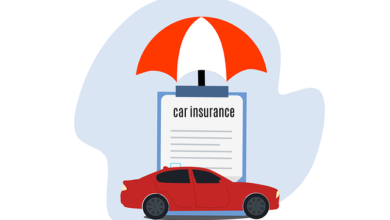Car Insurance: What You Need to Know Before Buying

Car Insurance Buing Guide
Car insurance in and of itself may sound as a very boring thing, which every car owner ought to have though. Being an indemnity against financial losses in the event of accidents or related bodily injuries, car insurance is mandatory when registering a car in many states. CR’s advice is to compare policies not only when you buy a car but every 3-4 years to find the best possible deal.
Before signing up with an insurer, it is advisable to know which companies provide the best service in addition to the lowest prices – Consumer Reports made it easier by taking a survey of over 40,000 policyholders to find out. Just as with everything else, it is essential to know what insurers consider as they fix your monthly rates with regard to your car insurance. These factors typically include:
- Driver Profile: Many factors including your age, experience driving record, prior accidents, or traffic violations would affect your premiums. Another factor that will make your premium hike is adding a teen driver to your car insurance policy.
- Car Type: Basically, a car with high insurance costs has higher costs for repairs or replacement because they are costly brands. Other high-performance cars are also expensive to insure since they represent relatively higher risk due to power and speedier models.
- Credit History: In many ways, most states allow insurance companies to factor in credit scores to determine your insurance premiums. Insurance providers defend that credit history is one of the significant indicators of risk; nonetheless, some states, for example, California, Hawaii, and Michigan, either restrict or ban the use of this factor. You can get a discount in the states where this factor is an issue if you work towards raising your credit score.
- External Conditions: Other factors that are unique to your location include weather conditions, traffic situations, and overall incidences of accidents. Places experiencing frequent destructive storms or many accidents might expect their insurance premiums to rise because companies need to overcome their risks and losses.
Loyalty Isn’t Always Rewarded
Often many people are convinced that they remain loyal to the insurance company they are subscribed to and will eventually be ‘rewarded’ for this decision. A nationwide online poll published by Consumer Reports in the past year shows that it pays to shop for a better price. Specifically, according to a recent survey of policyholders, 30 percent of respondents had switched insurers in the preceding five years and for 70 percent of those people, it was the lower premiums that had prompted them to do so.
The second reason to regularly compare insurers is the rather explosive topic known as price optimization. This technique which has been outlawed in nearly half of the US states permits insurers to increase premiums based on factors that are irrelevant to liability exposure. Here’s how it works: If an insurer feels that you are not willing to switch, they are likely to jack up their rates despite what is reasonable as this is the trap you find yourself in of paying a lot.
Consider Life Changes
Understandably, major life occurrences will change your car insurance costs at some point. Whether you are getting married and need to add a spouse or you have a teenage driver who needs a car- let us check how these changes affect your premium or when you switched from working from home to working from the office- as many did during the pandemic. You should call your insurer to know whether it becomes cheaper or more expensive, and then compare it with other insurers to know the best insurer to deal with.
In the same regard, do not forget to ask for a change in the premium tied to the used car’s depreciation. Insurers generally will not do this automatically so it’s up to you to check to make sure that you are not paying too much for out-of-date coverage.
Choose a Top-Rated Insurer
Although getting a relatively low premium is a plus, one should not get carried away by the idea of the price of an insurance product. When deciding which company can provide you with insurance services you’ll have to consider not only the cheap tariffs but also a fast and fair claim payment, good customer service, a detailed explanation of the policy you or your enterprise takes, and a company that provides help and advice to its clients.
CR assesses insurers by rating the services they offer their members based on the feedback received in areas like; the premiums paid, processing of claims, other services that are not under claims, the clarity of the offered policies, and active help. In the early part of 2024, CR conducted an auto insurance poll to 40,566 policyholders across the country; 28,958 respondents are CR members; 50,129 incident reports were collected from policyholders with experience with car insurance companies. Participants were asked if they had changed their insurers or made claims between 2020 and 2024, so it was easier to identify the main insurers with superior overall services.
Do Not Skimp on Premiums for Liability Only
Many states mandate minimum liability insurance for motorists, still, to improve your level of protection against potential losses, it is beneficial to go for more than the required level, though this may make a hole in your pocket. If you are ever found at fault for an accident that caused injuries or fatalities, with inadequate liability coverage, you will be responsible for thousands of dollars.
- Liability Insurance: This coverage reimburses for damages to other people’s property and their physical self as a result of an accident. The state legal minimums should be disregarded and additional limits obtained, even if the man has few assets. In some states, a court judgment means that the defendant’s wages will be garnished. An often given advice is to purchase $100,000 per person – $300,000 per occurrence and, finally, $ 100,000 for property damage. Douglas Heller, the insurance specialist at the Consumer Federation of America (CFA), also recommends an umbrella liability policy for the same reason. Upon enlarging the per-person coverage requirements to $300 000 this type of policy expands coverage of both car and home besides offering cover for your home and your retirement savings.
- Low-Limit Coverage: Even when going for umbrella policies or higher limits, it is costly, especially to low-income earners. To date, none of the states have implemented culturally tailored insurance for low-income populations just three states, that are, California, Hawaii, and New Jersey. Low limit liability coverage isn’t as effective as a higher limit but Heller writes that going without coverage or not driving at all hurts the economy.
- Uninsured Motorist Coverage: While not mandatory in most states, uninsured motorist coverage is a mighty addition. The Insurance Information Institute estimated that 14% of the drivers do not have insurance which has not changed in more than twenty years. It is relatively cheap and pays for medical expenses of yourself and the occupants of the car at the time of the accident with an uninsured driver. In no-fault states in which the insurance company pays regardless of who was at fault, it would still be useful because it covers lost wages. It also makes you and the family safe as drivers or pedestrians or in cases of one-way accidents or hits and run which are getting more common. As per the NHTSA report, in 2022, about 7,522 pedestrians were deadly hit and over 67500 were injured in a car crash. Heller suggests that if you have uninsured motorist coverage for others you can or should have at least that amount for yourself.
- Underinsured Coverage: As more drivers go with the state-required baseline minimum, underinsured becomes a necessity. This also helps if you have an accident with an impaired driver who has inadequate insurance to meet the medical or property costs.
Discover Some of the Ways You Can Cut on Extra Covers
Here are several others: Collision insurance This is insurance that covers losses from accidents and has specific deductions on contents such as the bumper, replacement of windscreen and wheels Comprehensive insurance This insures against loss by theft or damage from causes apart from a collision and has special reduction on contents like…
- Increase Your Deductible: Hunter, at the Consumer Federation of America (CFA), noted that increasing the overall and accident deductibles from $500 to $1,000 will reduce an average premium by 11%. But always keep in mind that you should be able to comfortably pay the highest amount from your pocket in case of a claim.
- Older Cars May Not Need Extra Coverage: If your annual premium for collision and comprehensive coverage is as high as or over 10 percent of your car’s actual worth, you should avoid it. In the long run, you may spend more for the premiums than what you would spend to fix or replace a wrecked, stolen, or written-off car. However, if you are the owner of a car that is presumably becoming more valuable over time, such as a classic car, then it will be wiser to take a classic car policy. This type of coverage insures your car given certain conditions and for its collectible worth other than as a vehicle you use most often.
- Drop Rental Reimbursement: This is for those who have another car to use when yours is being repaired, you can therefore do without rental reimbursement coverage. Furthermore, if you have a membership to an auto club or if your car has warranty that involves extortionate, then you can do without it and avoid paying for it.
- Review Personal Injury Protection (PIP) and Medical Payments Coverage: If you are already enrolled in a good health insurance plan you may not require additional medical payment through your car insurance. However, it is advisable to keep it if you are not having health insurance or most of your regularly commuting passengers may not have proper medical insurance for themselves.
Here’s a guideline on what a Smart Consumer should do to achieve Great Savings:
- Maintain a Clean Credit and Driving Record: Credit scores and driving records are the two important features that determine your insurance cost. To get the best rates, try to have a clean record of driving for at least, three years. As it is widely known, the states respond to higher credits, meaning lower insurance costs.
- Choose Your Vehicle Wisely: Insurance premiums depend on car models significantly. During the comparison of various vehicles, ask your insurer for premium quotes concerning any model you propose. In general, they require substantially higher premiums than regular and, consequently, less expensive vehicles.
- Assign the Right Driver to Each Vehicle: For a complete disclosure consult your insurance agent of the principal driver in each of the cars at home. If you match drivers by their records and the value of insurance cars, one can saves some cost/sum of mone. That is, it may be cheaper to pair the lowest-value car with the driver who commutes the longest rather than with the driver of the higher-value car. It is therefore important that the reader understands that the execution of this strategy may require some bargaining between the members of the family.
- Enroll in Driver Monitoring Programs: Several car insurance companies allow for a reduction in rates if the insurance company can have access to the user’s driving through the use of a smartphone app or device using the onboard diagnostical connection. It can save lots of money but it involves giving up some of your privacy as your insurer monitors your driving like some applications do. When applying for a policy ask whether there is a particular data you used to determine your discount, whether your risky driving could make you pay higher premiums and how the data gathered will be used.




